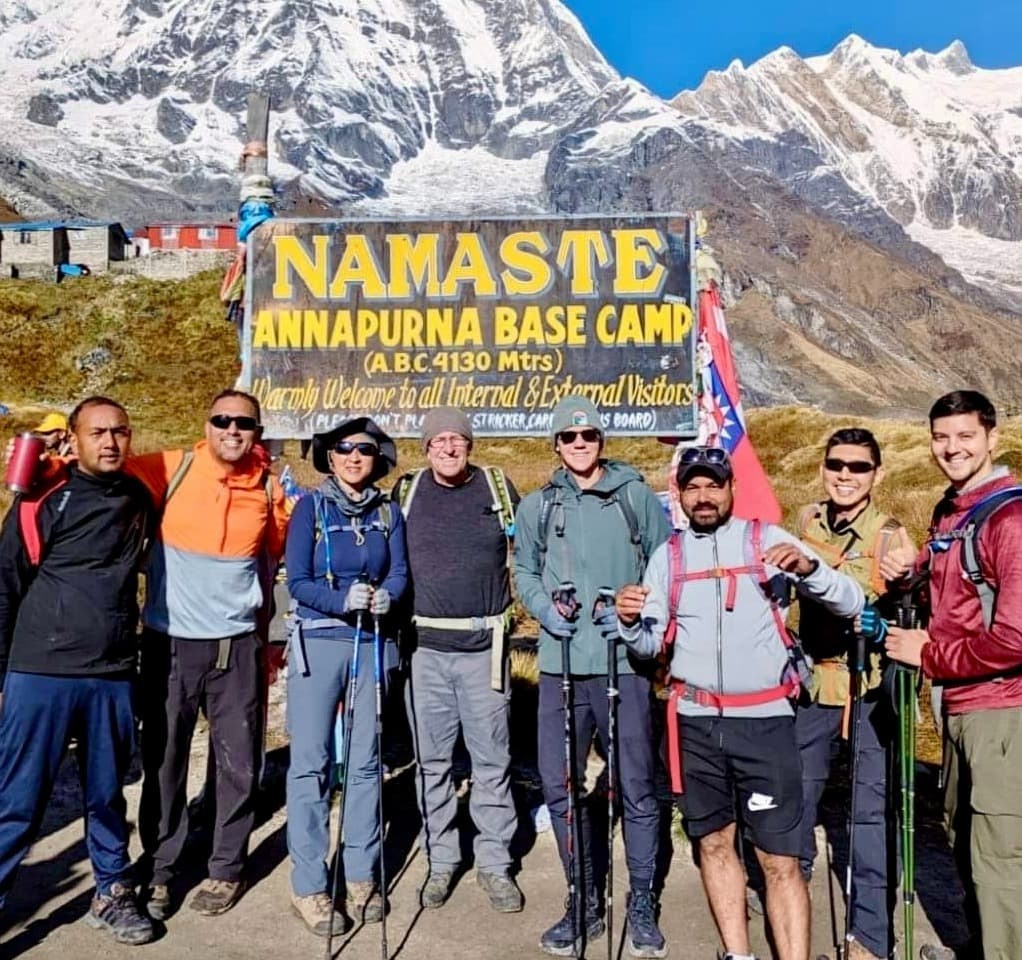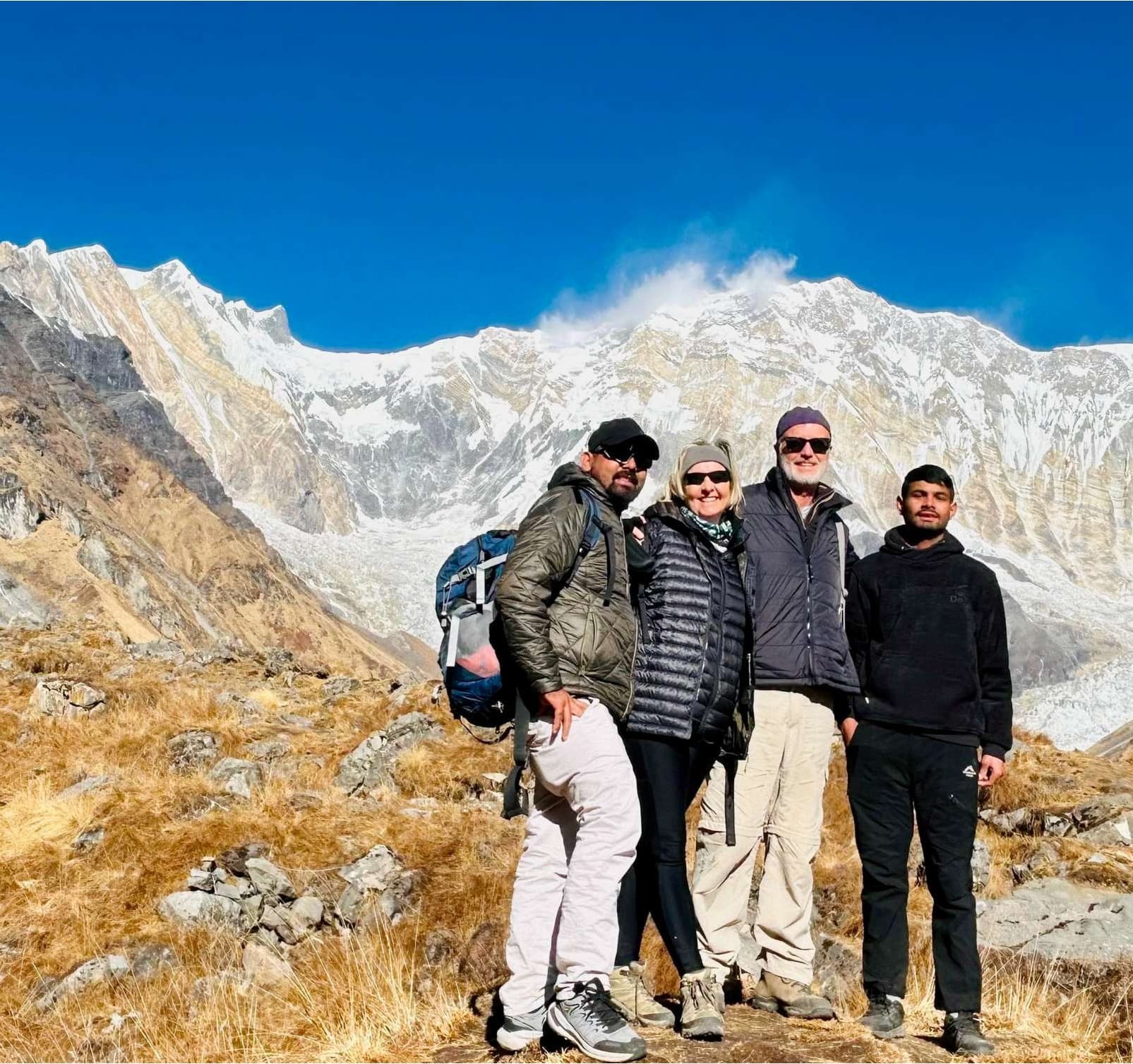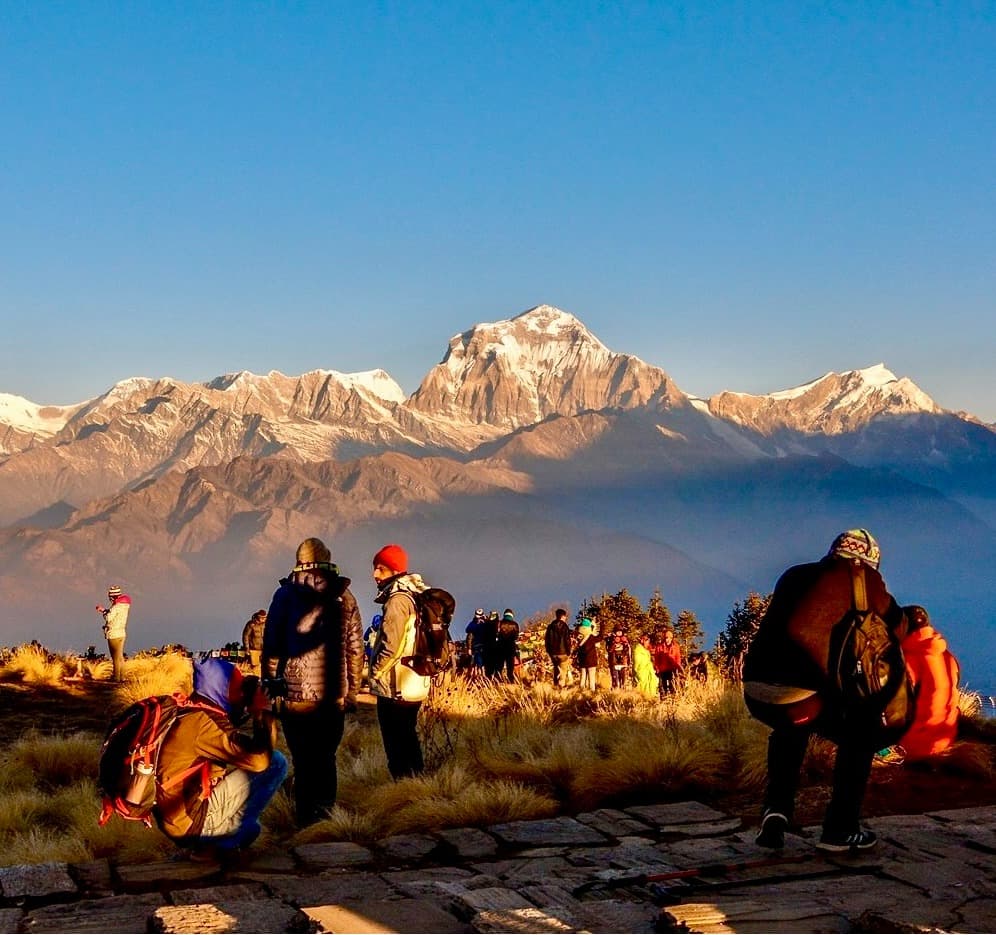Flight Information
For the Annapurna Circuit Trek, flights play a key role in ensuring smooth transitions during your journey. You’ll take a domestic flight from Jomsom to Pokhara and then from Pokhara to Kathmandu during the later stages of the trek. These short flights, lasting approximately 20-25 minutes, offer breathtaking views of the Annapurna and Himalayan ranges, making them a highlight of the trip. International flights to and from Tribhuvan International Airport in Kathmandu are not included in the package, so plan your arrival and departure accordingly. It’s recommended to book flights with flexible dates to accommodate any potential delays caused by weather or other unforeseen circumstances.
Nepal Visa Information
Obtaining a visa for Nepal is straightforward. Visa on Arrival is available at Tribhuvan International Airport and major land border crossings. To apply, fill out an arrival card, provide a passport valid for at least 6 months, a passport-sized photo, and pay the visa fee: USD 30 for 15 days, USD 50 for 30 days, or USD 125 for 90 days. Alternatively, you can complete an online visa application up to 15 days before arrival to expedite the process. You can also apply for a visa at Nepalese embassies abroad. For extended stays, visas can be extended at immigration offices in Nepal, starting at USD 45 for 15 days. Ensure your visa matches your planned stay to avoid complications.
Travel Insurance
Travel insurance is mandatory for the Annapurna Circuit Trek and must include coverage for high-altitude trekking (up to 5,416 meters at Thorong La Pass) and emergency evacuation. Your policy should also cover trip cancellation, interruption, medical treatment, and repatriation. In the rare case of altitude sickness or injury, helicopter evacuation is often required, so confirm that your insurance covers this. It is also advisable to check if the policy includes coverage for flight delays, as domestic flights in Nepal can sometimes be affected by weather.
Health and Physical Fitness
The Annapurna Circuit Trek is a moderate to challenging trek that requires a good level of physical fitness and stamina. You will be trekking for 4-8 hours daily through varying terrains, including steep ascents and descents. Prior preparation, such as regular cardio exercises, hiking, and strength training, is highly recommended. Acclimatization days are included in the itinerary to help your body adjust to high altitudes, reducing the risk of altitude sickness. Stay hydrated, eat nutrient-rich meals, and inform your guide of any symptoms like headache, nausea, or fatigue. If you have pre-existing medical conditions, consult your doctor before undertaking this trek. Trekking with proper gear and pacing yourself will ensure a safe and enjoyable experience.
Weather Conditions
The Annapurna Circuit Trek experiences diverse weather conditions due to its varying altitudes, ranging from subtropical lowlands to high-altitude alpine regions. The best times for trekking are spring (March to May) and autumn (September to November) when the weather is stable, skies are clear, and temperatures are moderate. In lower altitudes, temperatures can range between 15°C to 25°C, while higher altitudes like Thorong La Pass can drop to -10°C or lower, especially in the early morning. Winter (December to February) is cold but offers clear skies, while the monsoon season (June to August) brings heavy rains, making trails slippery and visibility poor.
Cultural Considerations
The Annapurna region is rich in Tibetan-Buddhist and Hindu cultures, and respecting local customs is essential. Greet people with a friendly “Namaste,” and dress modestly, particularly in villages and religious sites. Avoid wearing form-fitting or revealing clothing; instead, opt for comfortable attire that covers your shoulders and knees. When visiting monasteries or temples, remove your shoes before entering and walk clockwise around religious monuments like chortens and mani walls. Always ask for permission before photographing locals, especially in remote villages, and be mindful of their privacy and traditions.
Tipping Guidelines
Tipping is a customary way to show appreciation for the services provided by guides, porters, and drivers. While not mandatory, it is highly encouraged and appreciated. The standard practice is to tip 10-15% of the total trip cost or approximately USD 5-10 per day for guides and USD 3-5 per day for porters. Tipping can be done individually or as a group at the end of the trek. For drivers and hotel staff, smaller tips are acceptable. Always give tips in local currency (Nepalese Rupees) and hand them directly to the individual.
Safety & Security
Safety is a priority throughout the trek. Always follow your guide’s instructions, especially regarding acclimatization, trekking pace, and trail conditions. Stay hydrated, carry a first-aid kit, and report any symptoms of altitude sickness immediately. For added security, stick with your group and avoid trekking alone, particularly in remote areas. Keep your valuables, such as passports, money, and electronics, in a secure, waterproof daypack. Hotels in Kathmandu and Pokhara offer safe storage for non-trekking items. Be cautious of pickpockets in busy areas like Thamel and keep a copy of your travel documents as a backup.
Currency and Money Matters
The local currency is the Nepalese Rupee (NPR). ATMs are available in Kathmandu and Pokhara, but they are scarce or unavailable along the trekking route, so carry enough cash for your expenses during the trek. Small bills are useful for purchasing snacks, drinks, or souvenirs in villages. Credit cards are accepted in cities for hotels and restaurants but rarely in trekking regions. Currency exchange facilities are widely available in Kathmandu and Pokhara; exchange rates may vary, so compare rates before exchanging large amounts. Ensure your money is kept secure and in waterproof bags to protect it from the elements during the trek.
Accommodation Standards
The Annapurna Circuit Trek offers a range of accommodations based on the package chosen. In Kathmandu and Pokhara, you can select from 3-star, 4-star, or 5-star hotels, with premium options like The Dwarika’s Hotel available at an additional cost. During the trek, accommodations are typically in standard guesthouses or teahouses, providing basic facilities like twin-sharing rooms, shared bathrooms, and simple bedding. Higher elevations may have limited amenities, so prepare for more rustic conditions. Meals are provided at the guesthouses, with menus offering local and some international dishes.
Packing Essentials
Detailed recommendations on what to pack for the Annapurna Circuit Trek, including trekking gear, clothing layers, personal items, and toiletries. It’s essential to pack light yet adequately for varying weather conditions and altitudes.
Permits and Documentation
Information about required permits such as the Annapurna Conservation Area Permit (ACAP) and TIMS Card (Trekkers’ Information Management System), including where and how to obtain them. Ensure trekkers are aware of necessary personal documentation, such as passports and insurance papers.
Altitude Sickness and Acclimatization
Comprehensive advice on recognizing, preventing, and managing acute mountain sickness (AMS). Include details on symptoms, when to descend, and how acclimatization days in Manang and Pisang help ensure a safe journey.
Transportation
Transportation throughout the trek includes private vehicles for airport transfers and drives between destinations. A scenic domestic flight from Jomsom to Pokhara and another from Pokhara to Kathmandu are included in the itinerary, offering convenience and spectacular aerial views of the Himalayas. Ground transport is comfortable and well-organized, ensuring safe travel even on mountainous roads.
Electricity and Charging
Electricity is available in most guesthouses along the trekking route, but it may not always be reliable, especially in higher altitudes. Some places charge a small fee for using charging facilities. It is recommended to carry a portable power bank to ensure you can charge essential devices like cameras and phones. Bring a universal travel adapter, as Nepal uses Type C, D, and M plugs with 220V electricity.
Festivals and Public Holidays
Nepal is a land of vibrant festivals and holidays, and depending on the season, you may experience some of its rich cultural celebrations. Festivals like Dashain (September/October), Tihar (October/November), and Holi (March) are widely celebrated across the country. In the Annapurna region, Buddhist festivals such as Losar (Tibetan New Year) bring an extra layer of cultural immersion. Keep in mind that during festivals, businesses and government offices may close, and there may be higher demand for accommodations and transportation.
Food and Dining
Meals during the trek include local and international dishes, such as dal bhat (rice with lentils and vegetables), noodles, soups, and pancakes. Guesthouses typically offer a limited menu at higher altitudes, focusing on hearty and energy-rich meals. Vegetarian options are widely available, but options for vegan or gluten-free meals may be limited. It is recommended to stick to freshly prepared, cooked food and avoid raw vegetables or unfiltered water to prevent stomach issues. Carrying water purification tablets or a filter is advised.
Cancellations and Weather-Related Changes
The Annapurna Circuit Trek is subject to weather conditions, especially during flights from Jomsom to Pokhara or Pokhara to Kathmandu. Delays or cancellations may occur due to adverse weather, particularly in the monsoon or winter months. If weather-related changes disrupt the itinerary, alternative arrangements will be made to the best of our ability. It’s recommended to have a flexible schedule and consider buffer days in Kathmandu to accommodate any unforeseen delays.
Language and Communication
The primary language spoken in the trekking regions is Nepali, but many locals and trekking staff can communicate in basic English, especially in tourist areas. Guides are fluent in English and will help with communication and cultural interpretation throughout the trek. Mobile networks like NCELL and Nepal Telecom provide coverage in most areas, though it can be patchy in remote regions. Wi-Fi is available at guesthouses along the route for a fee, but connections can be slow or unreliable. Carrying a local SIM card can help with better connectivity during the trek.






















